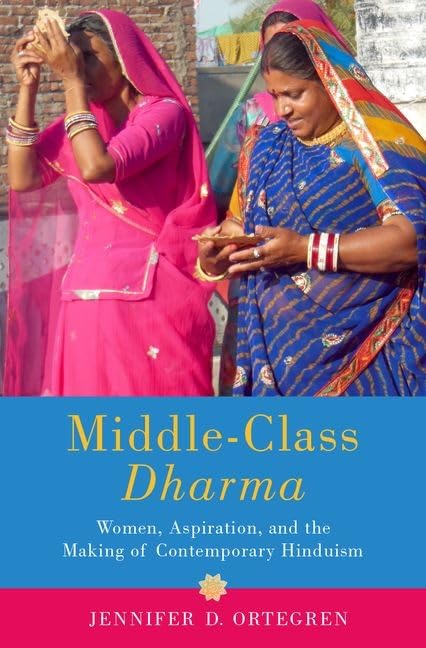Product desciption
Middleclass Dharma Women Aspiration And The Making Of Contemporary Hinduism Jennifer D Ortegren by Jennifer D. Ortegren 9780197530795, 0197530796 instant download after payment.
""You have to come to my wedding," Kavita told me, turning to face me where I sat next to her on the couch. "You can come with the other people from the street. You will get everything you need for your *research* there." "I will come, I will come!" I replied enthusiastically. I had only met Kavita and her two younger sisters, Arthi and Deepti (see Figure 2.1), mere minutes before this invitation was extended. I had initially come to Pulan that day in October 2012 to meet another woman, Heena, whose family rents a room on the third story of Kavita's family's home. Heena and I had been sitting in the furniture refurbishing store she operates with her husband on the main street of Pulan when Deepti, Kavita's youngest sister, passed by. Heena introduced us and told me to go with Deepti to meet her family. When we reached the family's three-story house-the largest in the gali-Deepti led me past the empty rooms on the ground floor, which I would eventually begin renting, to the second-story living room. There, we found Kavita and Arthi organizing clothing and jewelry they had purchased earlier in the day for the upcoming wedding festivities. Kavita made room for me to sit next to her on the couch and began asking me about myself. I immediately warmed to her because of her open, friendly smile and sharp, staccato Hindi, which I delighted in being able to understand. I explained that I had come to India to study how women's lives are different in rural and urban areas, and Kavita assured me that she and her family could help. She noted that her parents had come to Udaipur from Ram Nagar, a large village thirty-five kilometers north of the city, and that the family would be returning for her and her older brother Krishna's weddings the following month. Their weddings would be held five days apart to help reduce the difficulties of family members traveling from outside Udaipur. Prompted by the description of my research, Kavita commented on differences that she recognized between the village and the city. The biggest difference, she suggested, was the experience of caste, namely that in the village, people from different jatis live separately, whereas in the city, people are "mixed." As I would come to learn when visiting Ram Nagar for various functions, there is a fair amount of caste and religious diversity in the village. Although spatial and ritual segregation was rather strictly maintained during religious observances, it is likely more flexible in everyday life. The segregation during ritual functions-the occasions for which Kavita also traveled to the village-likely informed her sense of a lack of "mixing" in the village as. The majority of residents in the area of Ram Nagar where the family maintains a home were also from the Mali (lit: gardener) jati, although Mali was not a majority jati in Pulan"--


